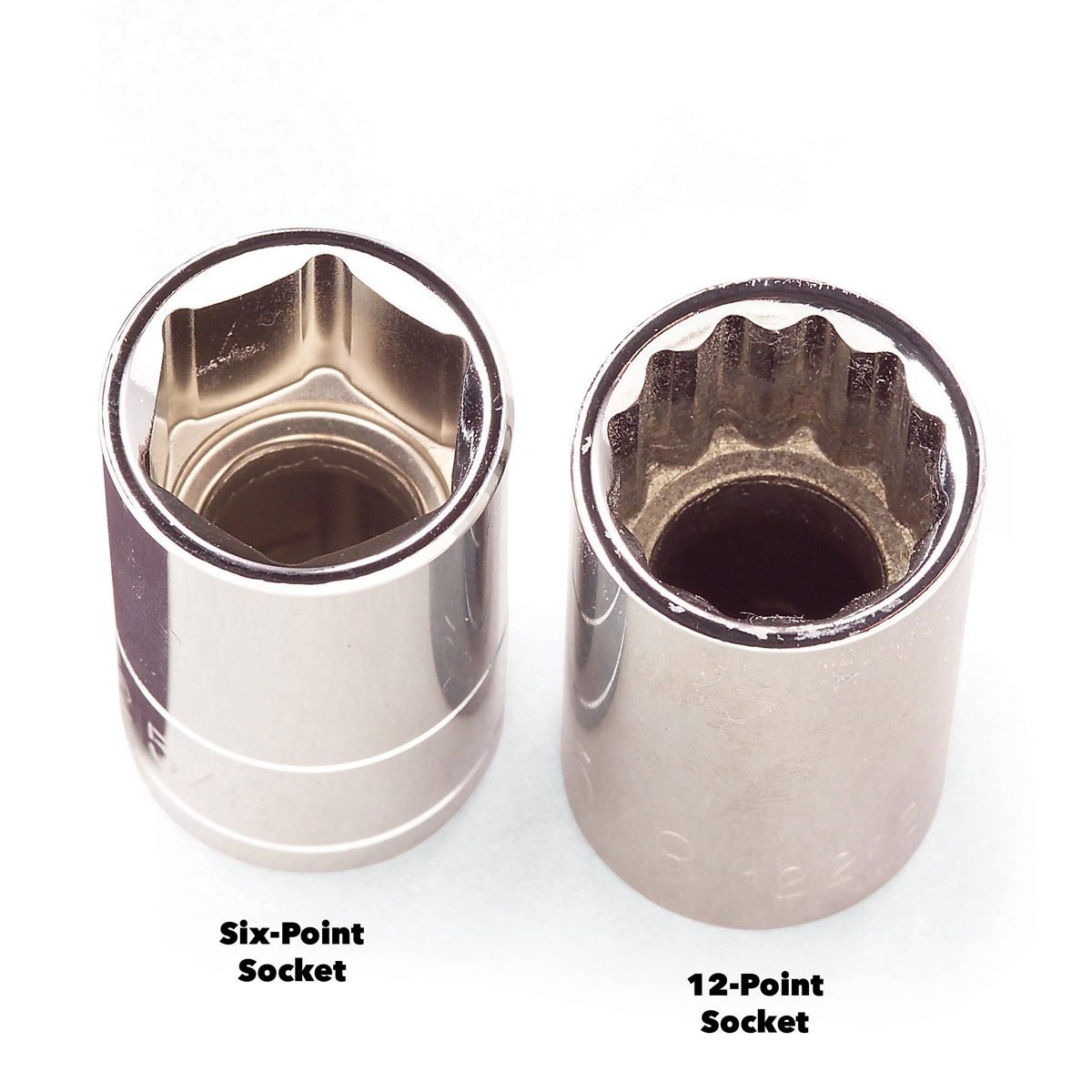Are 12-point sockets as good as six-point sockets? Find out the answer—and why—before you buy that expensive set of socket wrenches at the auto supply store.

6-Point Sockets vs. 12-Point Sockets: Which One Should You Use?

Flop open your socket wrench set and you’re likely to notice two different versions of sockets: six-point and a 12-point sockets. So which one should you use?
For the most part, you’ll want to stick with the six-point socket. Most of the fasteners you’re likely to encounter in typical DIY projects are going to be of the six-point variety. Plus, the six-point socket has some distinct advantages over its 12-point cousin when it comes. Both will work with the standard six-point fasteners you’ll encounter around the house or in the garage. However, there are occasions where a 12-point socket will come in handy for you, so to know the difference, read on!
On This Page
What Is a Six-Point Socket?
The first thing you’ll notice about six-point sockets is the standard hexagonal shape. There are six points, evenly spaced, with 60 degree angle between them.
Six-point sockets have thicker walls and more surface contact area with a six-point fastener. A six-point socket is designed to contact the head of a fastener well away from the corners, so that contact is made on the thickest part of the fastener. This dramatically reduces the likelihood of slippage and rounding over of the corners.
What Is a 12-Point Socket?
As you might surmise from the name, it’s got 12 points spaced at 30 degrees for a double hexagonal shape. There are 12-point fasteners out there, though they’re typically found in more specialized industries and for lighter clamp loads where the head of the fastener is recessed or not meant to be showing.
The wall of a 12-point socket is thinner and when used with a six-point fastener it makes less contact and offers less torque.
Which Socket Should You Use?
For the most part, you’ll really only need to use your six-point socket. Unless, of course, you have a 12-point fastener, then you should definitely use the 12-point socket.
If you’re doing any heavy wrenching, go with the six-point socket. It’s much less likely to slip off a stubborn fastener or round over the corners because it maximizes contact with the surface area. A six-point socket can also withstand higher torque.
The 12-point socket comes in handy for those hard-to-reach fasteners, or the ones you can’t see all that well, because the double hex configuration makes it easier to slip over a fastener without it having to line up perfectly as it does with the six-pointer. They’re fine for lighter duty repairs too, but a 12-point socket is more likely to slip, which is why the six-point version is better on stubborn bolts.
Chrome-Plated Sockets
One last point. Most high-quality sockets are chrome plated to prevent rusting and make cleanup easy. However, after years of use, the chrome finish can flake off. Don’t use a socket if the chrome is peeling. The chrome will be sharp as a razor blade.



















